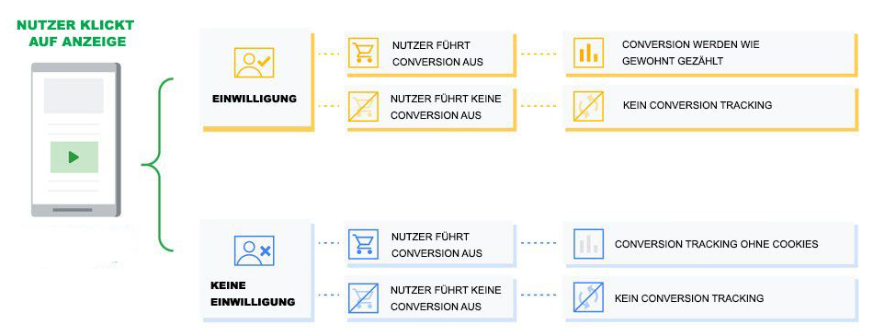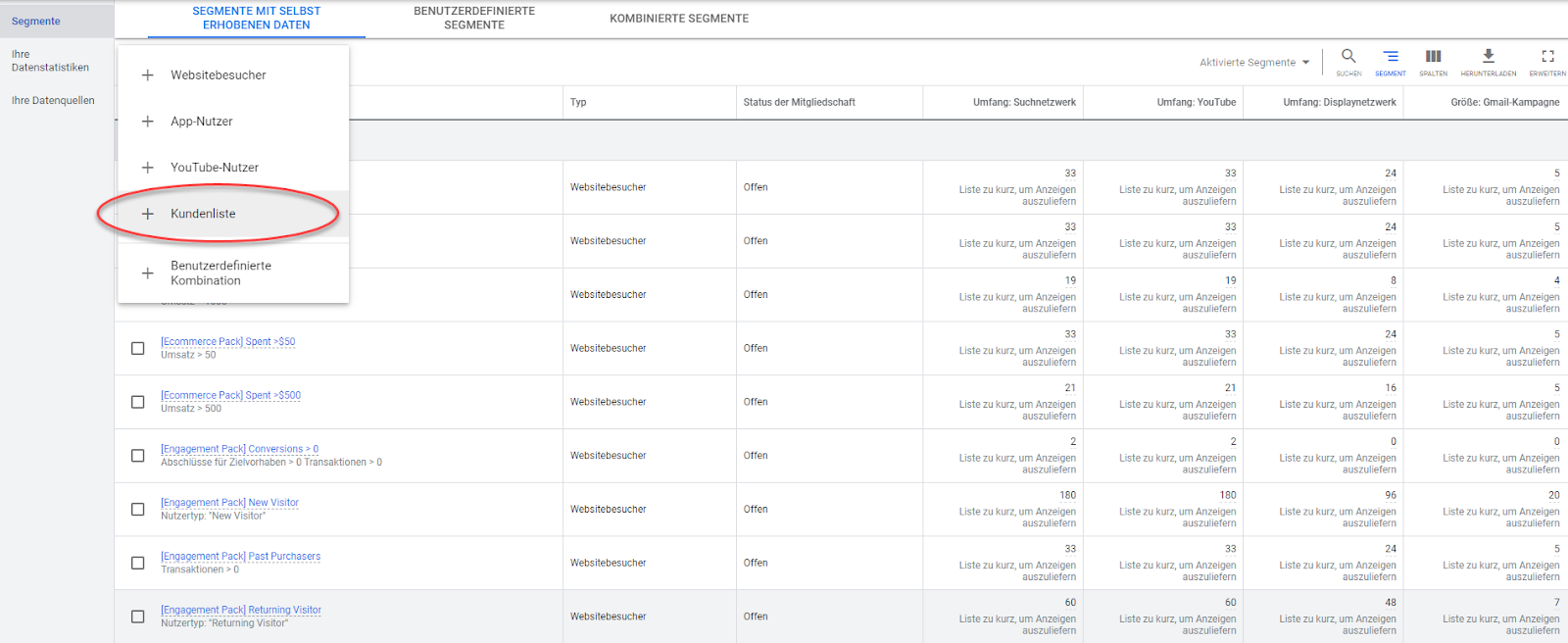With the right strategy, you can get a lot more out of practically all Google Ads accounts. More conversions, more customers and more sales.
In this post, we’ll bring you up to speed on Google Ads strategy.
Create target group oriented campaigns
An effective Google Ads campaign is an important part of any successful digital marketing strategy. However, to be truly successful, advertisers must ensure that their ads are tailored to the needs and interests of their target audience.
Creating targeted Google Ads campaigns is the key to success. Here are some tips on how to tailor your ads to your target audience:
- Define your target audience: Start by defining your target audience precisely. What are their ages, interests and needs?
- Use the right keywords: Use the right keywords to make sure your ads are relevant to your target audience.
- Customize your ads: Tailor your ads to your target audience by considering their language and interests.
- Use advanced targeting options: Use advanced targeting options such as location, language, scheduling, and devices to target your ads to the right audience.
- Use ad extensions: Use ad extensions to add additional information and CTAs to your ads to drive higher click-through rates and conversions.
- Run A/B tests on a regular basis: Run A/B tests regularly to optimize the performance of your ads and get better results.
Creating targeted Google Ads campaigns can make the difference between success and failure. By focusing on the needs and interests of your target audience, you can achieve greater effectiveness and better results.
Improve your conversion rate
Conversion Rate Optimization is a significant metric in Google Ads Marketing and primarily involves monitoring, analyzing and improving conversion rates. We therefore understand this to mean all measures that can be taken to improve the conversion rate.
With the implementation of website conversion tracking, you can record your sales in Google Ads, for example. With the help of this information you will be able to optimize your conversion data. But what options do you have?
- Special search terms (e.g. a certain product type) achieve many sales under your largely matching keywords? Then add this search term as an Exact Match Keyword and bid more on the relevant searches for this keyword.
- Excluded, or “negative” keywords use for search terms for which you do not want to deliver your ads.
- Price extensions allow you to add product and price information to your ad text. Through the direct link to the
- product subpage, the conversion path is shortened and a sale is more likely to occur.
- Expansion and redesign of ad content
- Bidding strategy and individual bid adjustments
- A/B testing can include different measures and allows the successful test points to be transferred to the campaign. This includes, for example, testing creatives, bidding strategy, keywords, target groups, call-to-action and much more.

Conversion rate optimization is a continuous process and should be regularly validated and tested for success.
Use Google Consent Mode
The GDPR requires companies to obtain users’ consent for tracking usage behavior. The Google Consent Mode includes two new tag settings that manage cookies for advertising and analytics purposes for advertisers.
The two options are used to customize the behavior of Google tags before and after user consent. This enables advertisers to measure conversions more effectively and at the same time respect the consent decisions of users for ad cookies and analysis cookies.

So Google Consent Mode still enables data-driven Google Ads marketing and gives you an advantage over competitors who advertise without the consent of the GDPR.
If the user refuses to consent to the data, marketing cookies will not be used. But then contextual and interest-based (FLoC) advertising is displayed instead of personalized advertising. This brings together groups with similar interests to form clusters. This basic idea anonymizes individual behavior and the data is processed quantitatively to protect browsing history.
Google Consent Mode supports Google Ads Conversion Tracking, Google Ads Remarketing and Google Analytics. You can learn more about Google Consent Mode here.
Use Smart Bidding
Automatic
Bidding Strategies
evaluate data and conversion signals through machine learning, and can target these into each auction to present ads to the appropriate users in real time.
The goal is to improve conversion-based data. This is also called “automatic bid setting”. Smart bidding strategies include target CPA, target ROAS, maximize conversions, maximize conversion value.
Smart bidding is becoming more and more important in increasingly data-driven and automated SEA marketing and offers clear advantages over manual or semi-automated bidding strategies:
- Machine learning: Based on various data that arises in your account, the algorithm is able to make predictions with different scenarios to achieve or predict a certain conversion volume or conversion value.
- Different context signals are analyzed in order to place the best possible bid at the right time and in the right place. The nearly 20 different signals include the devices, location, time, browser, operating system and many more.
- With dynamic attribution, you can track the user’s interactions with your ads, and understand how heavily the conversions are weighted in each path.
- The data-driven attribution model requires a minimum amount of data in order to be able to evaluate it reliably. Google’s best practice is to start with the position-based attribution model in the beginning and adopt the data-driven model when sufficient data is available.
Use customer match lists (Customer Match)
The customer match list is a useful yet still very underrated tool in Google Ads. It can be used in brand expansion, branding and conversion optimization.

With your own CRM system you can easily and DSGVO compliant upload your own customer list to your audience management and reach existing customers again with your ads in the search, display, shopping, app and YouTube network.
The best thing, however:
- The data from your customer power list is used through machine learning to find new, similar users that match your target audience. This allows you to automatically find new customers using the information from your existing customer base.
- Make sure you only upload customer data that you have collected yourself – This may have been collected online via your website or offline in your retail store. Gladly also in the mix. Before uploading the matching list, still get the customers’ consent and you can integrate your customer data into your Google Ads account.
Find the optimal ROAS for your business goals
As an advertiser, it’s important to know how to calculate Return on Advertising Spend (ROAS). The ROAS indicates how much revenue you generate for each advertising euro spent. However, it is not only important to calculate ROAS, but also to find the perfect ROAS for your business goals.
Here are some steps that can help you do that:
- Define your goals: Before you start searching for the perfect ROAS, you need to define your business goals. Do you want to generate more sales, increase your brand awareness or win new customers?
- Consider your industry and competition: It is important to know what ROAS numbers are common in your industry and among your competition in order to set realistic goals.
- Calculate your current ROAS: Calculate your current ROAS to see where you stand and how much room there is for improvement.
- Test different ROAS targets: Test different ROAS targets and regularly check how well your campaigns are performing. Adjust your goals accordingly to achieve your business objectives.
- Optimize your campaigns: Optimize your campaigns to achieve better results and reach your ROAS goals. Test different keywords, ads, and audiences to get the best possible performance.
Finding the perfect ROAS for your business goals requires patience, testing and optimization. However, by taking the right steps and regularly reviewing your goals, you can achieve better results and use your ad spend more effectively.
Regularly analyze the performance of your campaigns: Identify strengths and weaknesses and find optimization opportunities
Regularly analyzing the performance of your Google Ads campaigns is critical to ensure you’re getting the best results possible. Only through a thorough analysis can you identify strengths and weaknesses of your campaigns and find optimization opportunities.
Here are the steps that can help you do that:
- Define your goals: Before you analyze your campaigns, you need to define your goals. Do you want to increase your click-through rates, boost conversion rates, or increase sales?
- Collect data: Make sure your campaigns collect enough data to get meaningful results. Review your data in Google Analytics and in Google Ads.
- Check your keywords: Regularly check which keywords are working and which are not. Remove keywords that don’t generate conversions and add new ones.
- Review your ads: Review your ads and test different versions to see which ones work best. Also use ad extensions to optimize your ads.
- Review your target groups: Review your target audiences and adjust your campaigns accordingly. Use advanced targeting options to make your ads more specific.
- Track your conversions: Track your conversions to see which campaigns and ads generate the most conversions.
- Review your budget: regularly review and adjust your budget to ensure you are meeting your goals.
Regularly analyzing your campaigns is an important step in maximizing the effectiveness of your ad spend. Use the data to optimize your campaigns and get better results.






